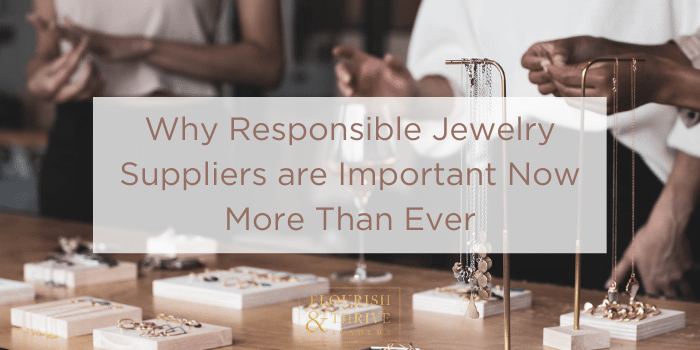Why Responsible Jewelry Suppliers are Important Now More Than Ever

As your business grows and you start to outsource production, make sure you're working with responsible jewelry suppliers.
The quality of vendors you partner with goes beyond just materials or aesthetic. It's vitally important to remember, you're legally responsible for the metal content of your jewelry.
Even a clasp at the end of a handcrafted necklace can get you into trouble if you're not careful.
Which is why we've invited our friend Nina Cooper from Nina Designs to share with us her insight on metal quality and liability.
Things to keep an eye on:
- lead
- cadmium
- low silver content
California has a specific law that regulates lead and cadmium levels in jewelry. With stricter requirements for children’s jewelry.
Federal Regulations are issued by the Consumer Product Safety Commission or CPSC . The federal government issued CPSIA (Consumer Product Safety Improvement Act of 2008) which regulates lead in Children’s jewelry.
In California, karat gold and sterling silver are in a separate class, but other metal jewelry has testing requirements for lead and cadmium. In addition, all metal jewelry sold as sterling silver must be .925 silver or higher.
Many national chains and some third party marketplaces are testing product proactively to protect themselves.
Brands caught selling jewelry with parts that don’t comply face serious repercussions.
Are your suppliers putting you at risk?
In order to protect yourself, it's crucial you know and trust your suppliers.
Price isn’t the always the most important thing to consider. In fact, a low price can be a sign some shady business practices are going on behind the scenes.
If you see the same lobster clasp from several online vendors and one has a price that is too good to be true, it probably is!
Our friend Nina purchased some beautiful items online that were advertised as silver.
When she tested the pieces, they were almost pure lead. The low cost started to make sense to her.
“It was heartbreaking to see that many jewelry designers on Etsy were using those same pieces. They had no idea they were selling jewelry made from lead. Not only were they unknowingly falsely advertising their jewelry, they were also endangering their customers. Both can result in lawsuits.”
If you're importing directly from overseas, you should test for silver content in silver and lead/cadmium in non-precious metal.
Testing is critical because the most liability is in the first point of entry into the US. That being said, you're still vulnerable if you buy from an unscrupulous importer within
the US.
How to work with responsible jewelry suppliers:
- Limit yourself to a small group of trusted suppliers.
- Ask your suppliers about their testing protocol. A conscientious supplier will be happy to share this information with you.
- Trust but verify: periodically send silver for testing to be sure it is sterling and send metal jewelry for lead/cadmium testing.
More detailed information on this topic and links to resources are available here:
https://www.ninadesigns.com/customer-service/faq/metal-jewelry-laws
Nina Designs provides this information as a public service and believes that it is substantially true and correct. It is not provided as a legal opinion and should not be relied upon as such by businesses in their efforts to comply with current legislation in any country.

